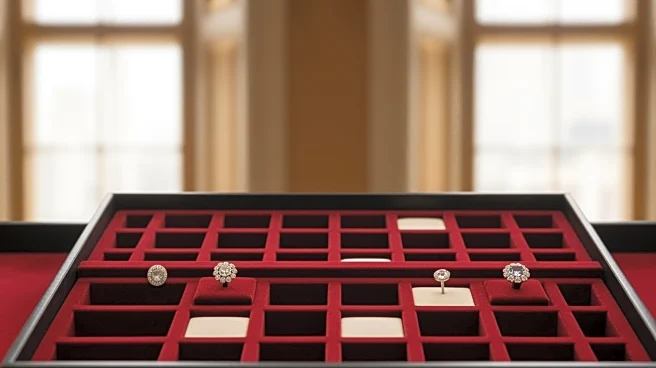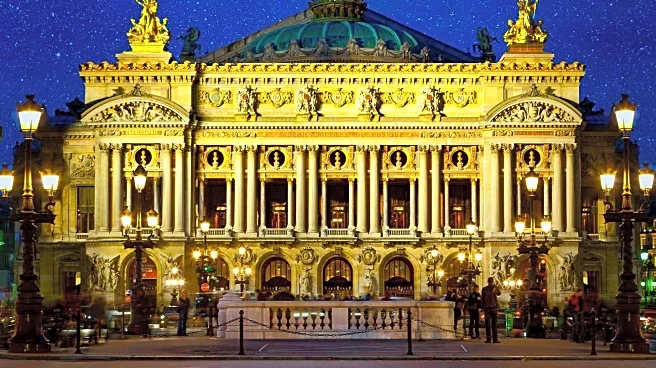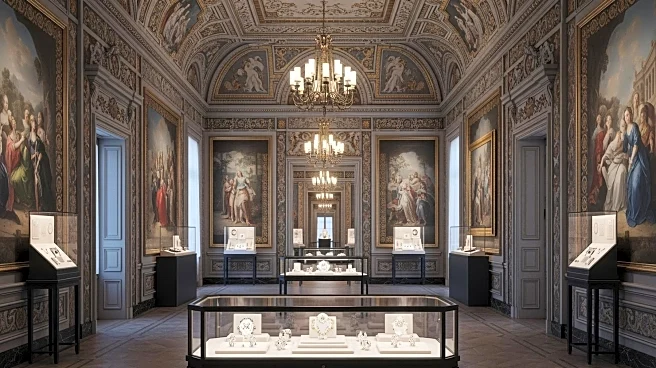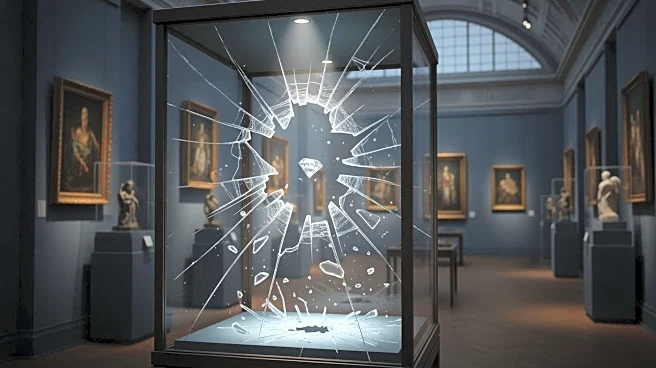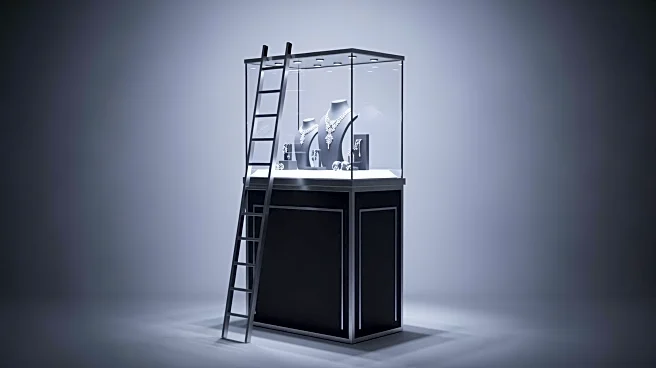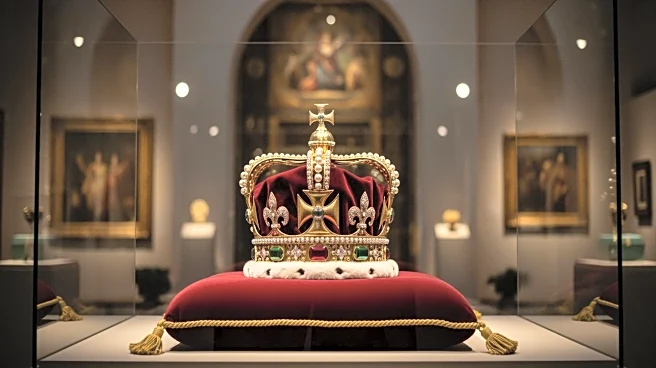What's Happening?
A daring jewel heist at the Louvre Museum in Paris has captured global attention, not only for the audacity of the crime but also for the unexpected fame of a German-made freight lift used in the operation.
Thieves executed a swift daylight robbery, using the lift to access the museum, where they forced open a window, smashed display cases, and stole jewels of 'inestimable value,' including Napoleonic treasures. The heist, which took less than four minutes, has prompted a significant investigation by Paris police and art investigators, who are racing to recover the stolen items before they are potentially dismantled and sold. The lift, manufactured by Böcker Maschinenwerke GmbH, has become a viral sensation on social media, with the company leveraging the unexpected publicity to highlight the lift's capabilities.
Why It's Important?
The heist at the Louvre, the world's most visited museum, raises serious concerns about security measures at cultural institutions. The theft of such significant historical artifacts not only represents a cultural loss but also poses challenges for law enforcement in tracking and recovering the items. The incident underscores the vulnerabilities in museum security systems and the need for enhanced protective measures. Additionally, the viral fame of the freight lift highlights how unexpected events can impact brand perception and marketing strategies, as Böcker Maschinenwerke GmbH capitalizes on the situation to promote its product. This case illustrates the intersection of crime, culture, and commerce, with potential implications for museum security policies and corporate marketing approaches.
What's Next?
Authorities are intensifying their efforts to track down the thieves and recover the stolen jewels. The investigation is likely to focus on identifying the perpetrators and understanding how they managed to execute the heist with such precision. The Louvre may also review and potentially upgrade its security protocols to prevent future incidents. Meanwhile, the public and media attention on the heist and the freight lift may continue to influence the narrative around museum security and corporate branding. Stakeholders in the art world and security industry will be closely monitoring the developments and outcomes of this high-profile case.
Beyond the Headlines
The heist at the Louvre highlights broader issues related to the protection of cultural heritage and the challenges faced by museums in safeguarding valuable artifacts. It also raises questions about the ethical implications of using crime-related events for marketing purposes, as seen with the freight lift's viral fame. The incident may prompt discussions on the balance between security and accessibility in cultural institutions, as well as the role of technology in both facilitating and preventing crime. Long-term, this event could influence policy changes and innovations in museum security and artifact preservation.


